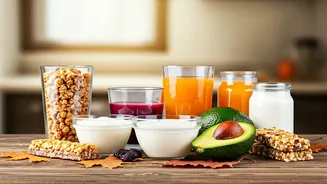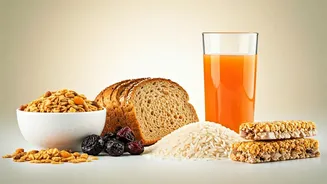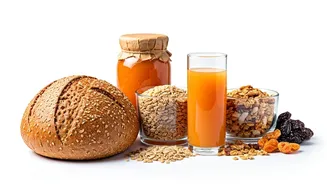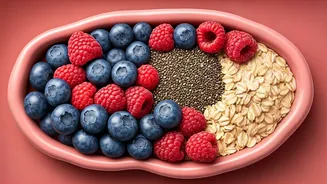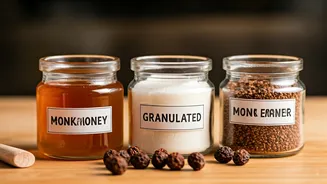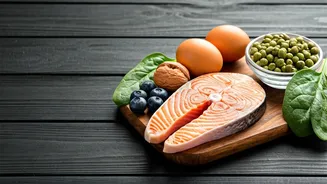Granola's Deceptive Facade
Granola, often touted as a breakfast champion, frequently conceals a high sugar and calorie content. While it can offer some fiber and nutrients, many
commercial granola varieties are loaded with added sugars, oils, and sometimes even chocolate chips or candy pieces to enhance their flavors. The high caloric density and sugar levels can quickly offset any perceived health benefits. When consuming granola, you might easily consume a large serving, leading to an excess of calories, that are then stored as fat, especially if physical activity does not balance it. Choosing granola with less added sugar and fats, or making your own with oats, nuts, and seeds, is a good alternative. Be mindful of serving sizes to maintain a caloric balance and support your weight loss efforts.
Yogurt's Flavorful Trap
Flavored yogurt, while seemingly a light and convenient snack, often packs a sugar punch that can counteract its benefits. The natural sugars present in yogurt are boosted by added sweeteners and artificial flavors, which make it appealing. These additives, even in low-fat versions, contribute excess calories that may hamper weight loss and boost sugar cravings, often leading to overeating and hindering the process of managing weight. Opting for plain yogurt and adding your own fruits and a touch of honey or stevia can keep the sugar in check, allowing you to enjoy the probiotic benefits of yogurt without the extra sugar and calories. This gives you greater control of your health decisions in your diet.
Dried Fruits' Concentrated Calories
Dried fruits are another potential pitfall due to their concentrated calorie content. The dehydration process shrinks the fruit, leading to an increase in the sugar density and calorie per serving. While dried fruits have nutrients and fiber, the smaller size can deceive you into eating far more than a typical portion of fresh fruit. This overconsumption elevates the intake of calories and sugars that may lead to the accumulation of weight. Being cautious about serving sizes and balancing dried fruit intake with other nutrients is essential. Consider combining dried fruits with nuts or seeds for a snack that is more nutritionally balanced and helps you feel fuller for longer.
Restaurant Salads' Hidden Risks
Restaurant salads, perceived as weight-loss-friendly, can be loaded with hidden calories and unhealthy fats. Salad dressings, often high in fats, sugars, and sodium, can quickly turn a light salad into a calorie bomb. Adding fried toppings, creamy cheeses, and croutons also increases caloric content substantially. Even the portion size of a salad, if it is very large, can contribute to excess calories. When ordering a salad, choosing the dressing on the side and opting for light vinaigrettes or other healthy options is the right choice. Consider including a lean protein source, such as grilled chicken or fish, and plenty of fresh vegetables. This will enable you to construct a salad that is both satisfying and supportive of your weight goals.
Nut Butters: Portion Awareness
Nut butters, such as peanut butter and almond butter, are highly nutritious, providing healthy fats, protein, and fiber. However, due to their high caloric density, overindulgence can easily lead to weight gain. A standard serving size is typically two tablespoons, but it can be easy to exceed this when eating directly from the jar. Additionally, some commercially available nut butters might contain added sugars, salt, and oils. Be mindful of the serving size and opt for natural nut butters made with only nuts to maintain a balance of calories. Spreading nut butter on a whole-grain toast or combining it with sliced apples provides a fulfilling and nutritious snack without overdoing the calories.
Smoothies: Liquid Calories
Smoothies are a trendy way to consume fruits, vegetables, and protein. However, smoothies can be surprisingly high in calories, especially when made with large quantities of fruits, added sweeteners, and high-calorie ingredients such as yogurt or nut butters. The blend can quickly turn into a sugar-laden beverage, providing a quick calorie boost without the satisfaction of a solid meal. If you like smoothies, you can make them healthier by focusing on the amount of added sugars, using more vegetables than fruits, and including a protein source like protein powder or Greek yogurt, to make sure you stay full longer. Always consider portion sizes and opt for low-calorie mix-ins to keep smoothies aligned with weight loss.
